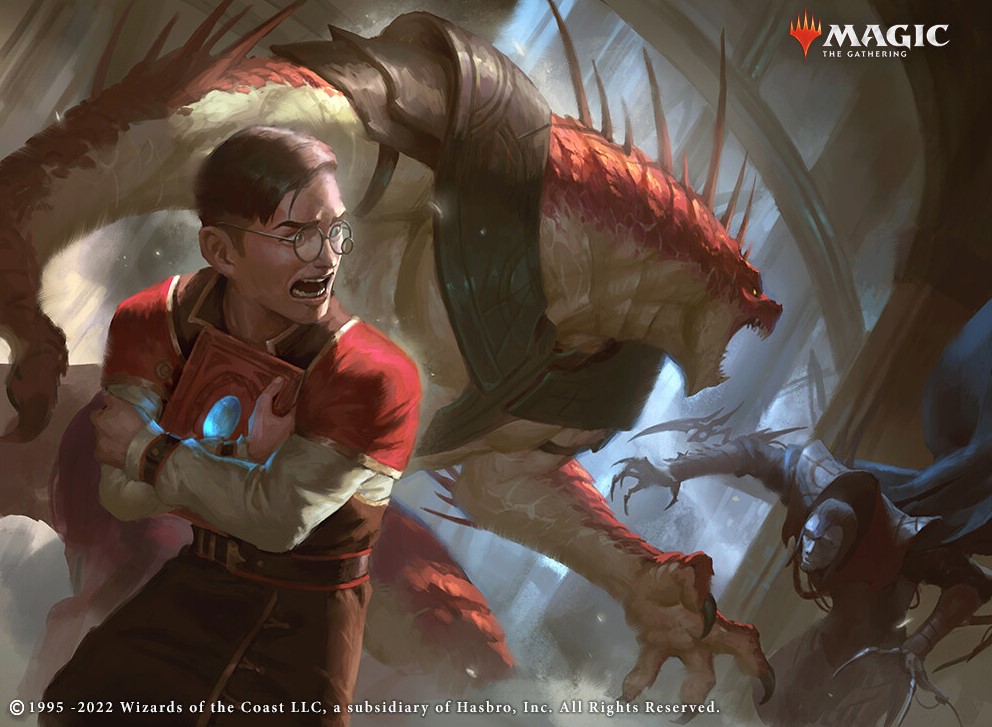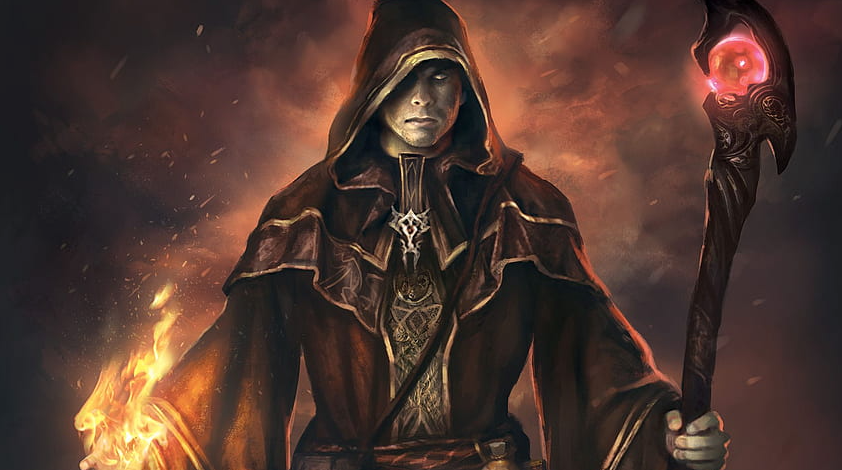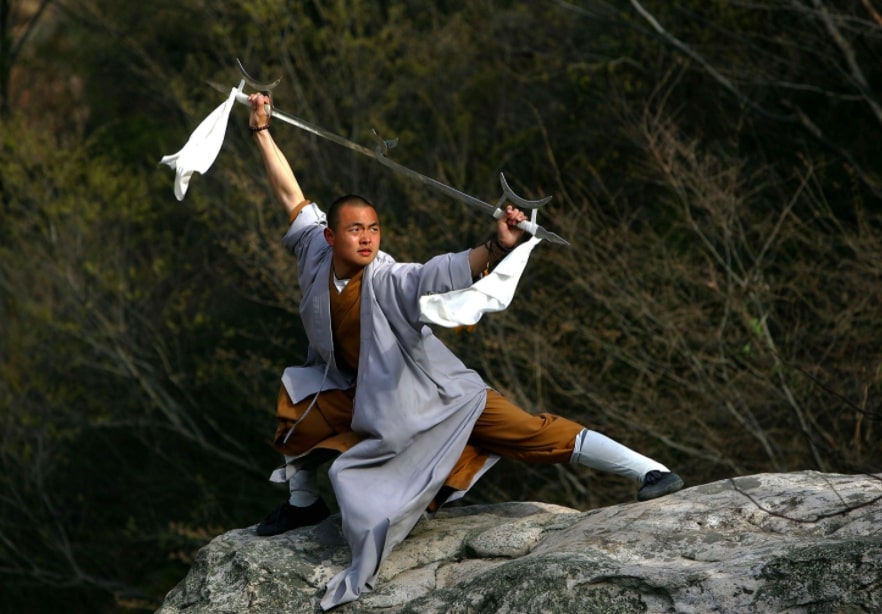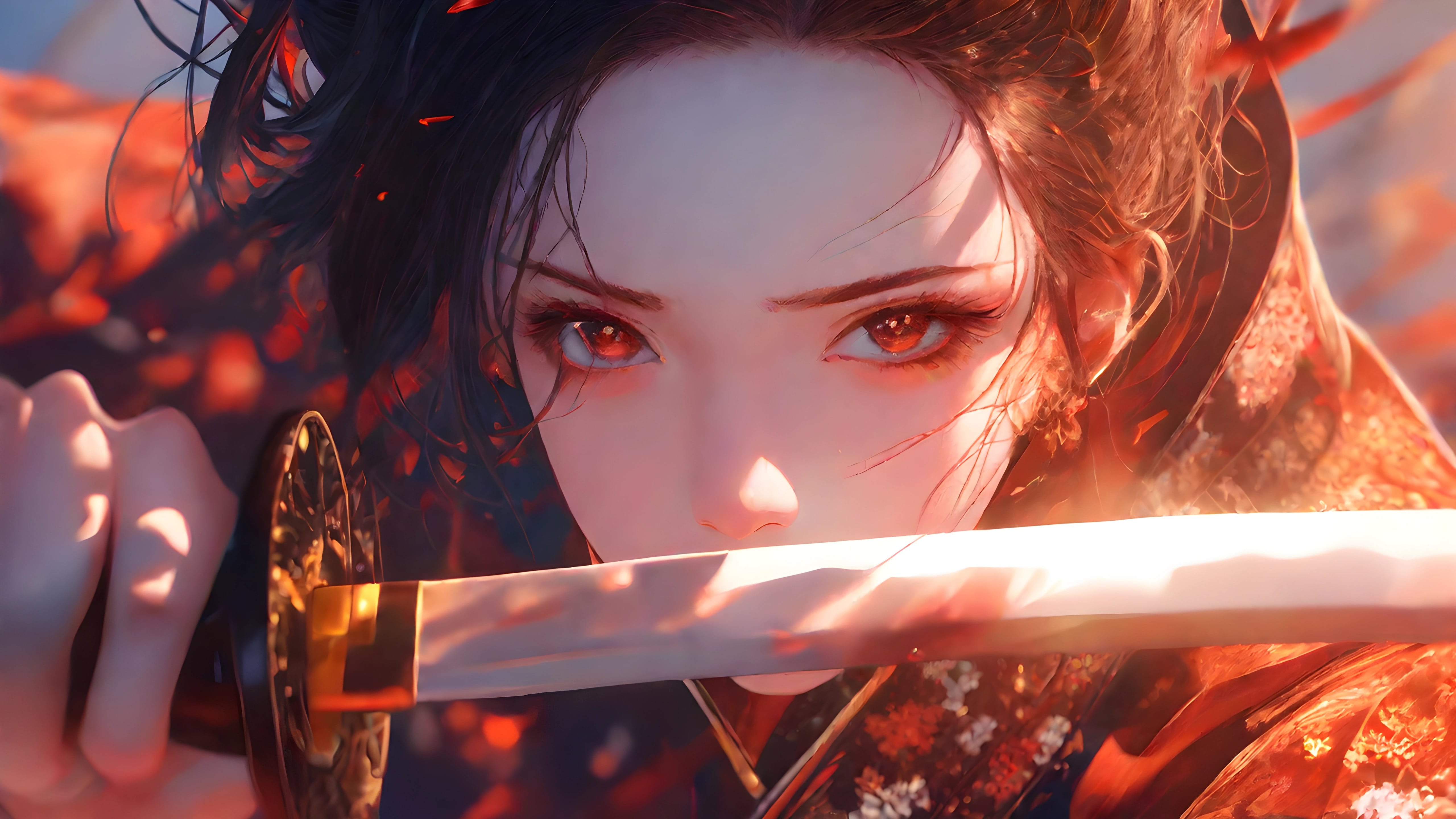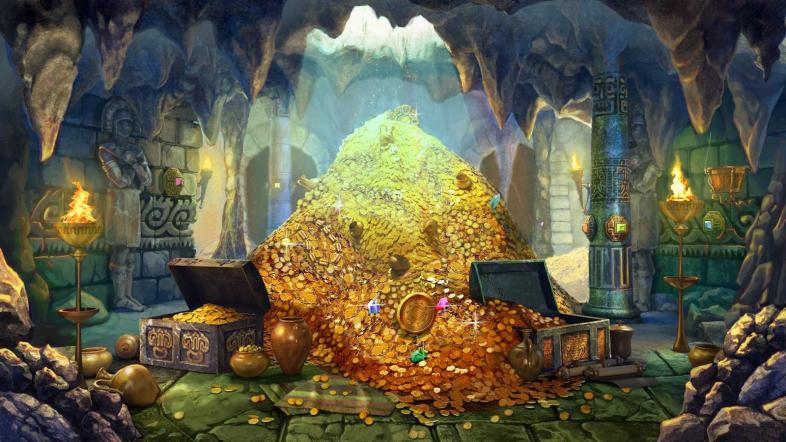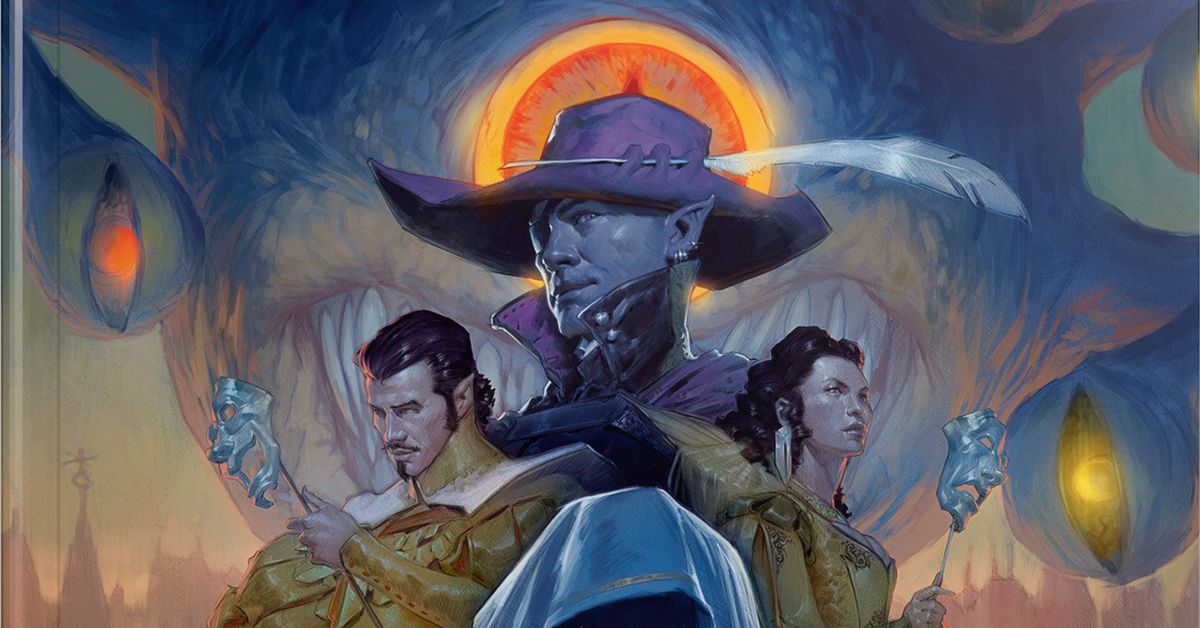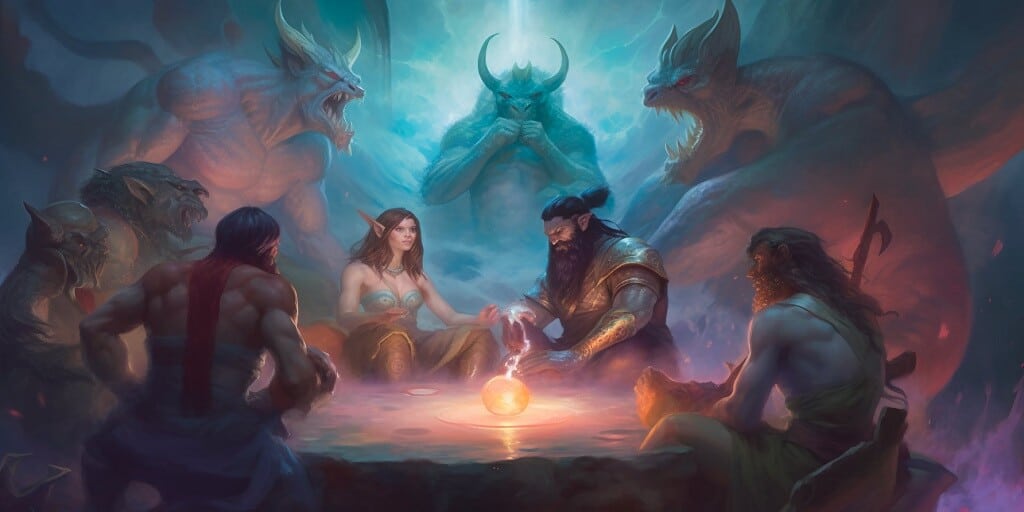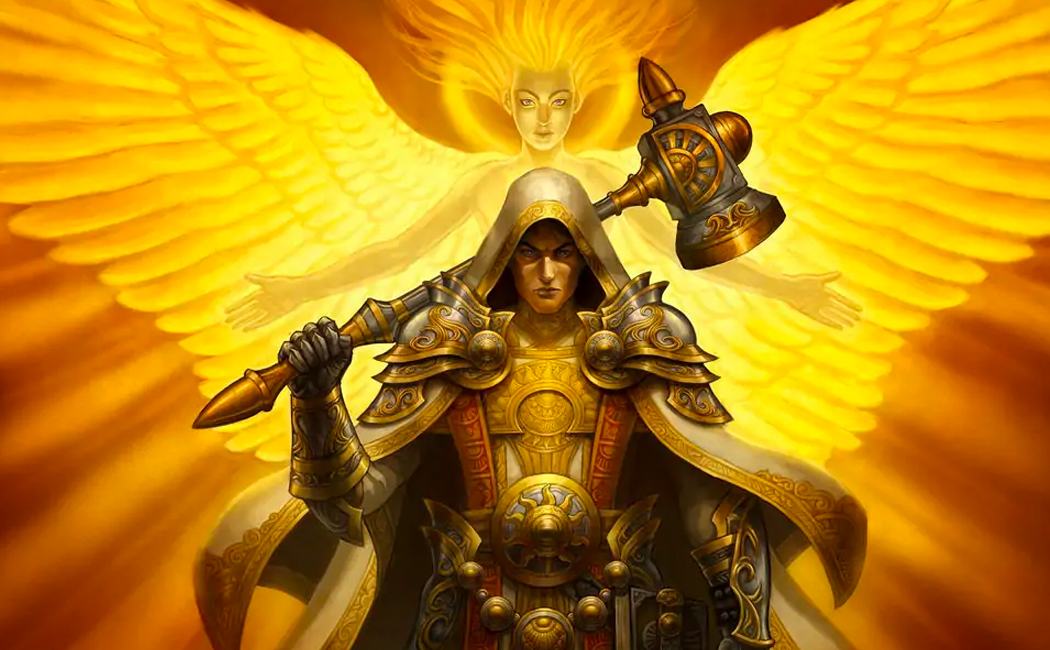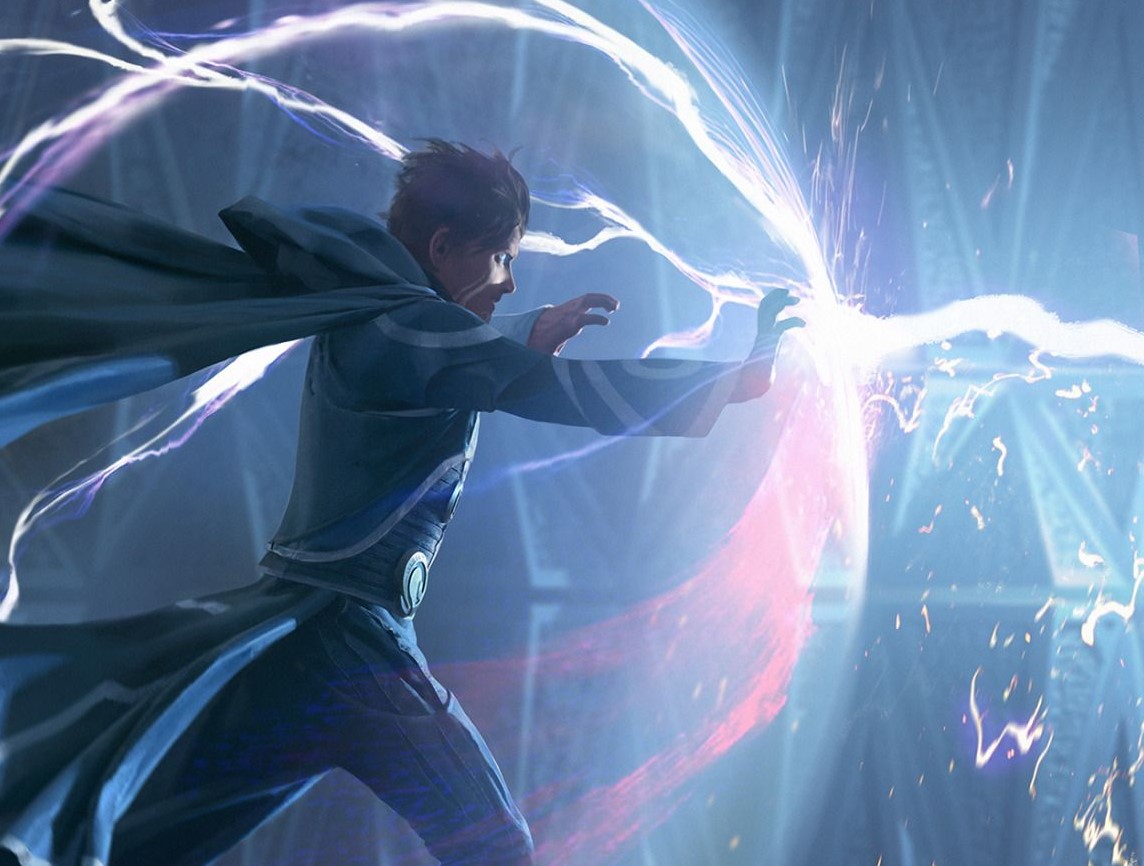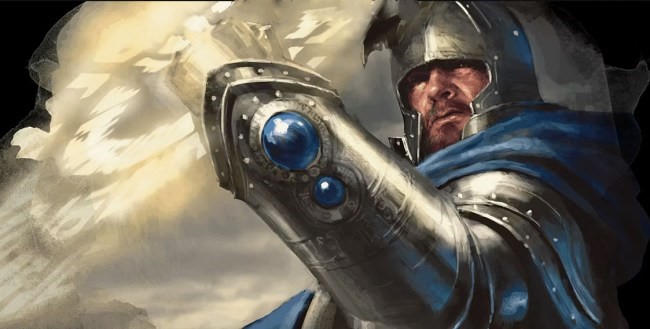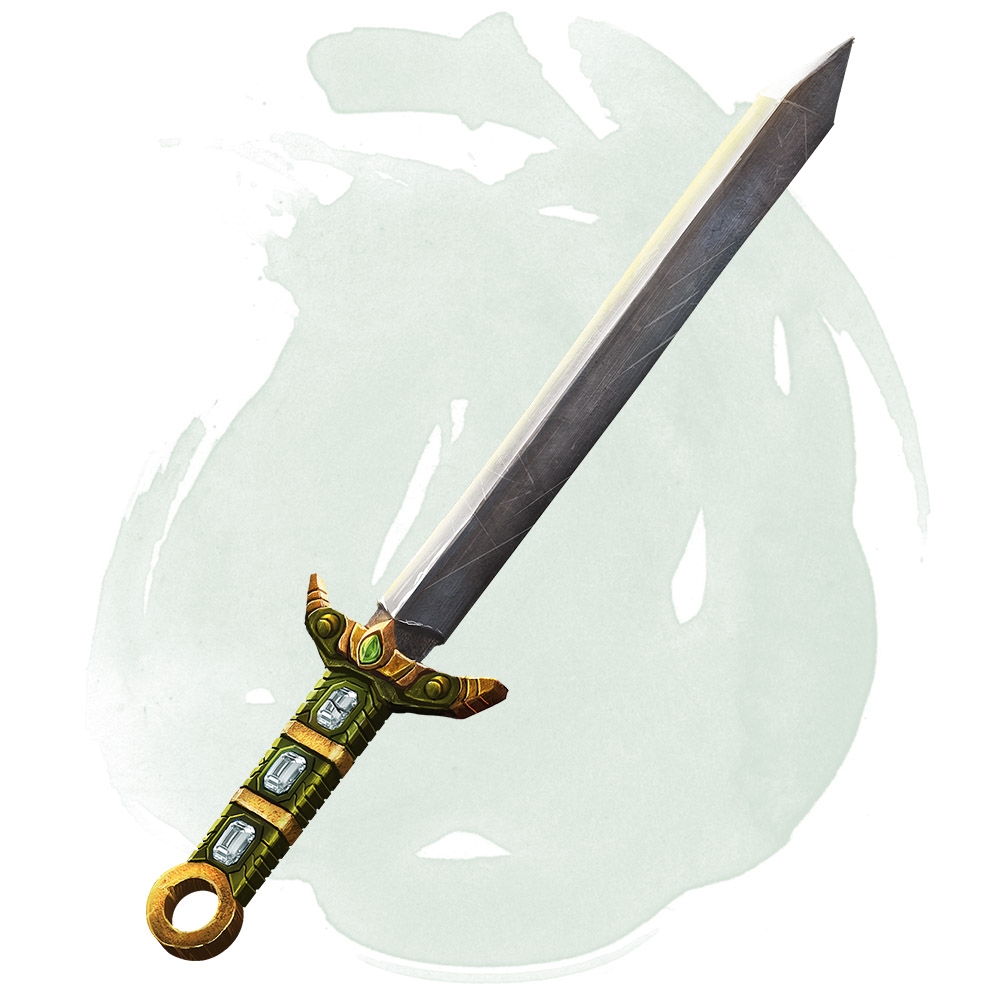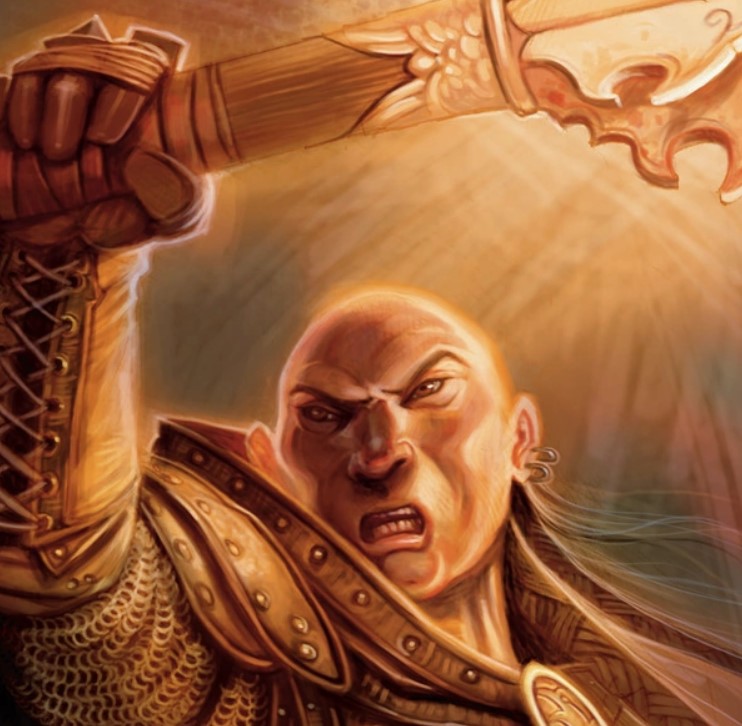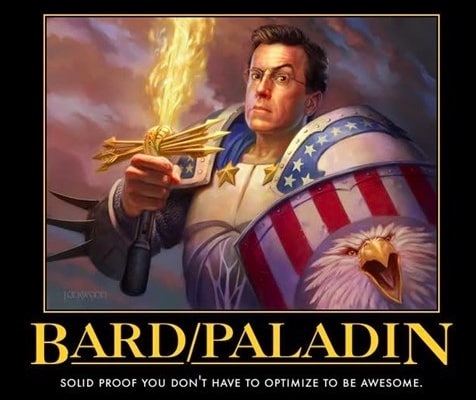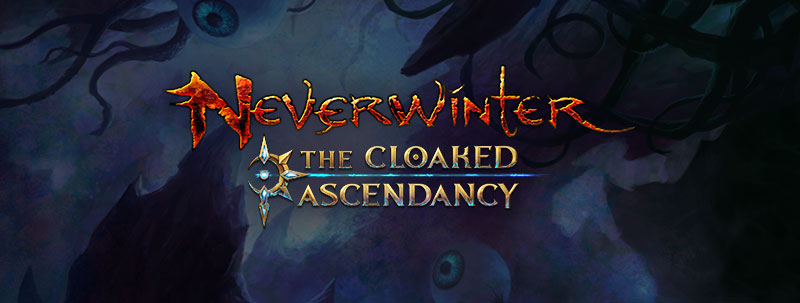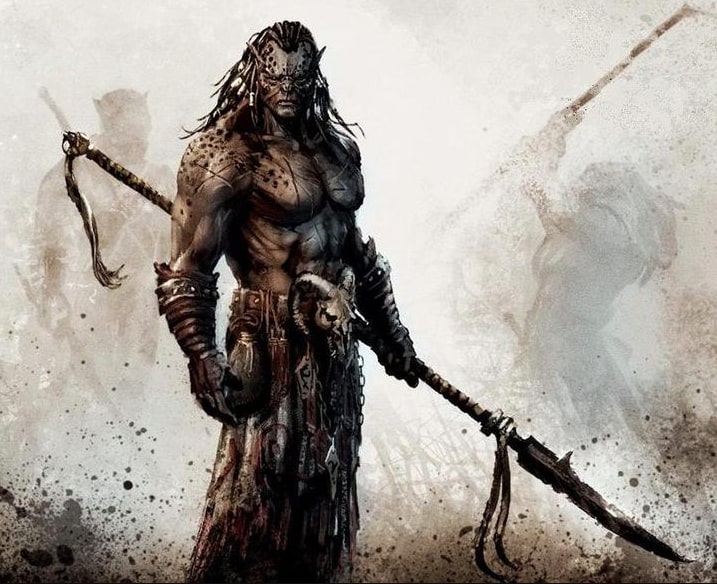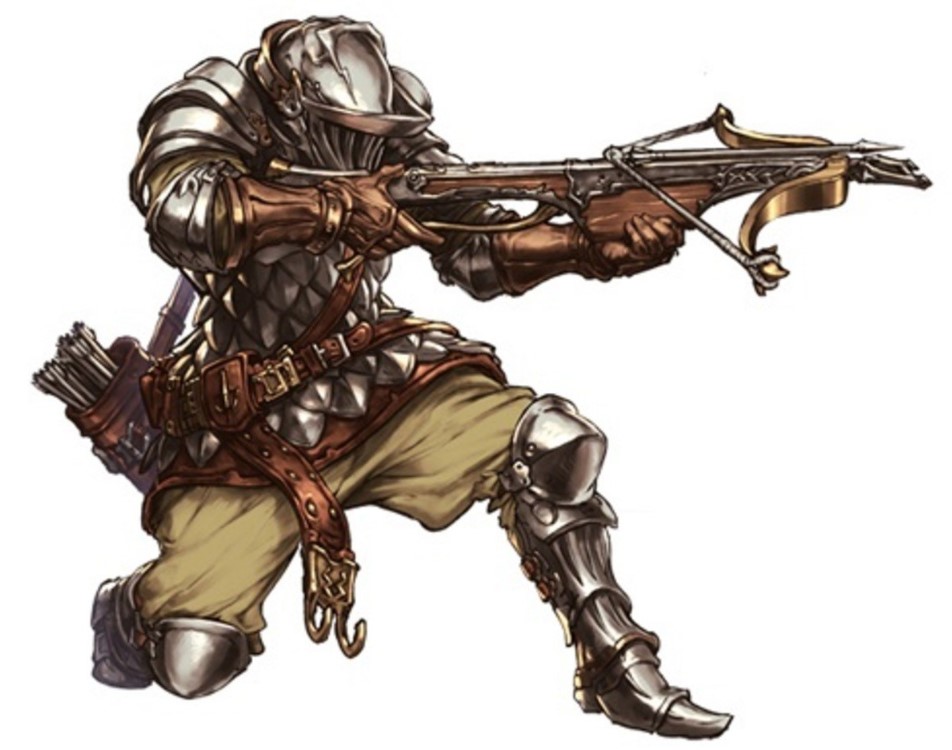![[Top 10] D&D Best Party Compositions That Are Great a group of adventurers towering valiantly upon a cliff.](/sites/default/files/styles/responsive_image_600xauto/public/2022-07/screenhunter_02_0.jpg.webp?itok=uKxCJ0Yi)
If you’re looking for the stylised, fun-to-play D&D party compositions then look no further than this list. For parties of any size, I present some compositions that work both in RP and combat, geared toward being navigable and interesting to play, promoting cooperation and teamwork as a core component of the functionality - and survivability - of the party.
This list might be best picked from by curious DM’s who wish to run one-shots themed around certain encounters or playstyles.
For the purposes of this list, all parties are assumed to be Level 8.
10. Fighter, Cleric, Wizard, Rogue

In fights, your fighter and cleric would be taking the brunt of the opposing force, while your wizard utilises the incredible world of magic to control the battlefield and your rogue makes a point of dealing single-target attack damage. Your cleric also keeps the party in good health where they’re able, and your fighter simply goes ham on opponents.
This composition isn’t locked into any subclasses, and can be diversified as the players wish when they gain access to their subclasses.
9. Fighter (Battle Master); Wizard (School of Divination); Druid (Circle of the Shepherd), Cleric (Twilight Domain)
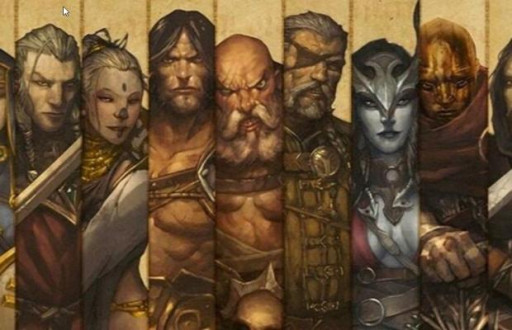
A Battle Master Fighter has access to 3 manoeuvres. Manoeuvres that manipulate foes are plentiful and recommended, including goading attack that can provoke enemies into attacking them, tripping attack that can knock a foe prone, and disarming attacks that can do what it says on the tin. Alternatively, Battle Masters can opt for manoeuvres that empower their allies, such as commander’s strike, manoeuvre attack, or rally.
The Battle Master can also gain insight into their foes with Know your Enemy, to be able to better direct companions with an informed course of action.
The School of Divination Wizard’s strength lies in its Arcane Tradition’s ability, Portent, to more directly influence the fates of foes. Needless to say, the ability to swap out any roll with a foretold outcome is pivotal to mastering the vicissitudes of the battlefield.
The Wizard also has great flexibility in casting spells of the divination school, and with the abundance of useful divinations spells, such as Detect Thoughts, Detect Magic and Guidance (it’s a cantrip), the wizard gains particular insight into the weals and woes of the world around them well in advance.
Circle of the Shepherd Druids serve to empower their allies through their spirit totem, and being able to converse with beasts and fey might situationally grant special insights into the order of the world.
The spirit totems that the Circle of the Shepherd can summon grants flexibility for situational encounters - boost the hitpoints of your allies, grant them advantageous strength, advantageous attacks, wisdom, or empower healing spells.
The Twilight Domain Cleric emboldens their allies in the dimness of night, grating shared darkvision to friends and advantageous initiative. While being a standard clerical companion, and providing standard clerical healing, it can negate the frightened or charmed effects, or even heal minor wounds.
Its most notable ability, however, is the Steps of Night which allows it to gain flying speed, navigating combat arenas free of obstruction.
8. Fighter (Banneret); Sorcerer (Clockwork Soul); Barbarian (Path of the Zealot), Paladin (Any)
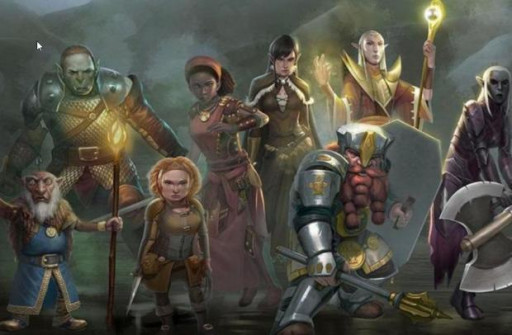
This particular concoction of companions aims to reimagine the control of the tides of battle. It is designed to embolden allies and dismay enemies.
The Banneret Fighter rallies his companions in the midst of combat, and outside of fighting carries with him an air of graceful and lordly demeanour. This extends the use of the Bannerets standard Second Wind ability to inspire his friends.
The Clockwork Soul Sorcerer is a creature of unquestionable order - no longer are your victims to the tides of fate. She will Restore Balance in situations in which the chaotic forces of Advantage and Disadvantage deregulate the vestiges of order which exist in combat, denying foes their advantage and mitigating allies’ disadvantages.
As a Bastion of Law, she will protect her allies with magical wards that acquit them of the harm done to them.
Path of the Zealot Barbarians are incredibly good at not dying. With the aid of the Banneret and Clockwork Soul, this beast will keep on beasting for a long time.
With the additional saves their Rage grants them, and the increased radiant and necrotic damage, this Zealot makes a perfect companion to the Paladin for dealing incredible amounts of damage while absorbing the brunt of the attacks from foes.
The Paladin will hit hard and regularly, but what makes them essential to this team is their particular devotion to keeping their allies not-dead. Paladins have incredible healing power.
The Paladin’s Aura of Protection is a comfort in times of need, and being in close quarters alongside the Banneret and Zealot, the additional bonuses to saving throws may be crucial in keeping their companions safe from the harmful effects which require saving throws.
7. Rogue (Arcane Trickster), Bard (College of Lore), Artificer (Armorer), Cleric (Trickery Domain)
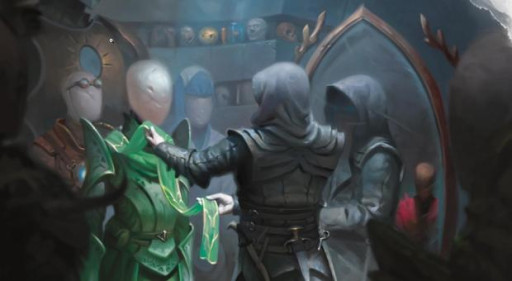
An Arcane Trickster Rogue is your wildcard. Mage Hand and Legerdemain grant incredible utility in the daily activities of rogue-ing, encompassing that need to remain unnoticed.
The real treasure, however, of the Arcane Trickster is its access to the wizard’s pilfered spellbook. While most spells would go whoosh over the Arcane Trickster’s head, the cantrips are a goldmine.
At 8th Level, the Arcane Trickster has access to first and second level spells, and some come highly coveted by lesser rogues: Misty Step, Invisibility, Suggestion. Think of the possibilities!
The College of Lore Bard shares these interests with the Rogue, and in the dim candlelight they pore over the stolen tome together, decrypting the secret language of the wizard who authored these arcane rituals. But the Bard, you see, unlocks the magical secrets. The ability to choose any two spells that exist in the Dungeons and Dragons metaverse (up to, theoretically, third level) is unfathomably useful to a bard who simply seeks riches.
An artificer tinkering with thieves’ tools seems fitting, and at 6th level can additionally replicate the Gloves of Thievery, Eyes of Charming, Lantern of Revealing, Rope of Climbing or Goggles of Night. All incredibly useful items to possess during a heist.
Additionally, the Armourer Artificer may customise their armour for subtler undertakings, increasing speed and granting advantageous stealth checks.
A Trickery Domain Cleric knows not to trust the natural sneaking abilities of their companions, and, as such, bestows upon them the Blessings of the Trickster, granting them advantageous stealth checks.
Alongside the bard, the cleric acts as the voice of the party to persuade, deceive, and hustle.
When in a pinch though, Cloak of Shadows comes in real handy to vacate the scene of the crime.
6. Ranger (Beast Master Conclave / Drakewarden), Druid (Circle of the Shepherd / Circle of Wildfire), Artificer (Battle Smith / Artillerist)
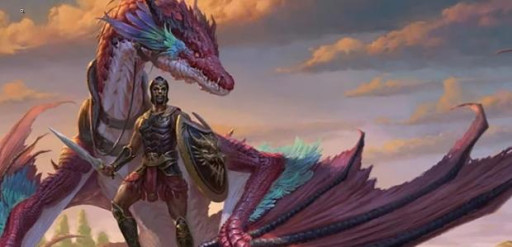
Beast Masters and Drakewardens each have a companion that assists them in battle.
The Circle of the Shepherd Druid can embolden its summoned creatures, while the Circle of Wildfire keeps an elemental companion.
Artificers can summon an Eldritch Cannon (Artillerist), or keep a Steel Defender (Battle Smith) as a companion.
5. Druid; Artificer; Warlock (Fathomless); Fighter
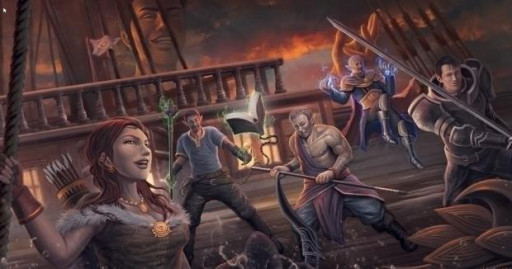
We’ve hired the following sea-dogs for this adventure:
A druid’s uncanny ability to be where the wind blows and where lightning strikes twice should not be overlooked. Their druidcraft is the most accurate meteorological service available to date, and, in a pinch, moving large bodies of water comes in handy.
Artificers are known for playing with explosive toys, and I bet they are always eager to man the cannons. Additionally, with the amount of saving throws and ability checks a crew is expected to make while out at sea, their unparalleled Flash of Genius may come in handy when assisting their companions.
Warlocks are the water that fill the sea, some say. Mostly those who have made pacts with the Fathomless. While granted access to spells that manipulate water and wind, the true gem of the sea is their ability to summon tentacles from the deep, breathe underwater, and commune with any creature that is fully submerged in the same body of water they are.
Fighters are just generally good to have around, because, honestly, the rest of the crew is kind of squishy.
4. Wizard (Order of Scribes), Artificer (Any); Sorcerer (Clockwork Soul); Bard (College of Creation)

An Order of Scribes Wizard renounces the need to pore over long-forgotten texts. No, this wizard awakens his spellbook, and treats it as a companion through which he suffuses his magical ability.
He gains a far more mechanical understanding of his spells than those who still dabble in the mystic ways. With the ability to mix spell effects, this wizard crafts arcane intricacies with the slightest of ease.
Artificers are far beyond their magical cousins, having long ago decided to delve into the mechanical magics that they can manipulate. This is thematically fitting.
lockwork Soul Sorcerers know that Order and Balance is penultimate in a world drowned in chaos. They stare fate in the eyes and say “No.”
College of Creation Bards, too, infuse the world around them with life, awakening potential in their allies, and creating or awakening objects to aid them.
3. Bards, Bards, Bards!
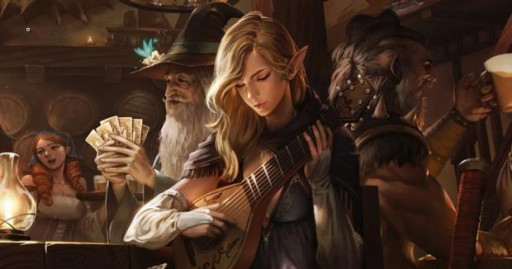
A party of bards is a band, or, as my DM would probably mutter under his dragon breath, a menace to society. Bards are perhaps the most versatile class that exists in D&D. They can fulfil any role in the traditional party makeup, albeit not as effectively as a specialist might, but would more likely fulfil multiple roles depending on the situation.
College of the Swords bards can be frontline fighters, while College of Lore bards will unlock magical secrets hidden from most. College of Whispers bards are terrifying little emo creeps, while College of Spirits bards speak to those on the other side.
The potential is limitless, and the more bards, the better (unless you’re DMing, in which case, my sincere apologies).
Now, to come up with a band name…
2. Non-Spellcasters (Any)

Out-of-the box thinking, and tactical strategising become essential, and requires good communication and cooperative manoeuvring between party members.
1. Any (Any)

There isn’t any stereotype a character cannot break out of. Clerics don’t have to be healers. Barbarians don’t have to be brutes. Bards don’t have to be… promiscuous. Monks… exist.
At every step of the way, a whole new world of possibility opens for players, and whatever makes the players happiest is the best party composition.
You may also be interested in:
- The Best D&D Classes (Ranked from Worst to Best)
- Top 25 Best D&D Villains of All Time
- 32 Most Interesting Facts About Dungeons and Dragons!
- 25 Best D&D Games for PC That Every Fan Must Play!
- The 10 Best DnD Streams
- Most Powerful D&D Dragons For Adventurers To Defeat
- Top 10 Best DnD Campaign Ideas
- Top 5 DnD Most Useful Languages
- D&D Top 10 Most Damaging Spells That Obliterate Foes
- Top 15 Most Powerful D&D Spells
- The Best D&D Race for Every Class
- Top 10 D&D Best Quests That Are Amazing
- Top 10 D&D Best Utility Spells
- [Top 10] D&D Best Zombies
- [Top 10] D&D Best Simple Weapons For Killing Foes
- [Top 10] D&D Best YouTube Channels
- [Top 5] D&D Best Tank Builds That Can Withstand Massive Damage

